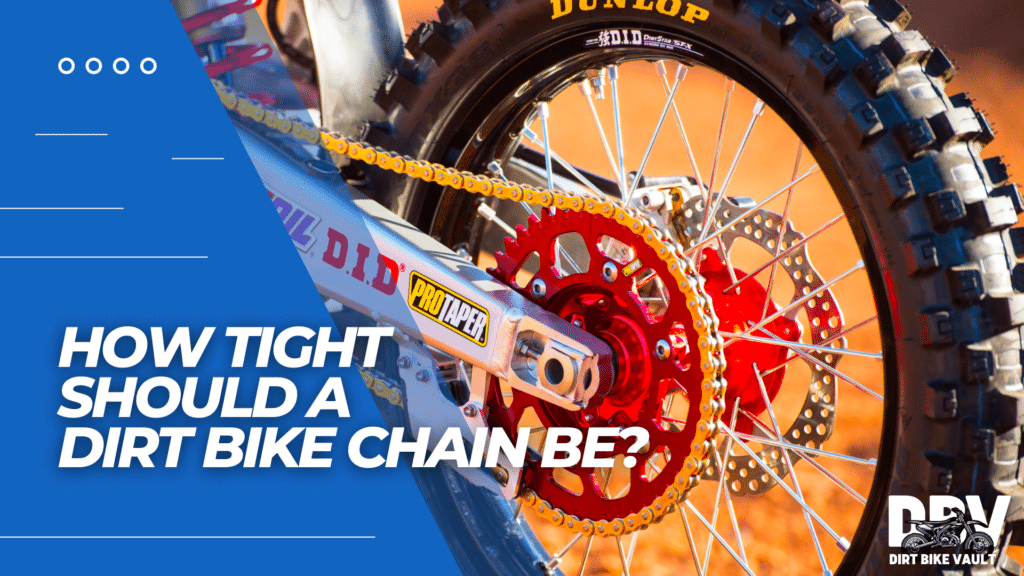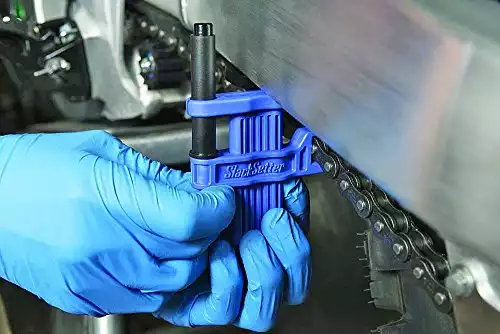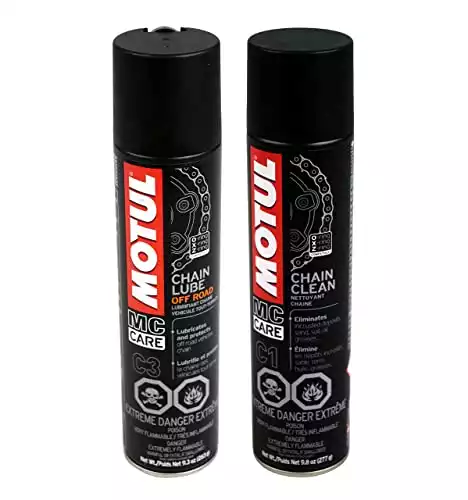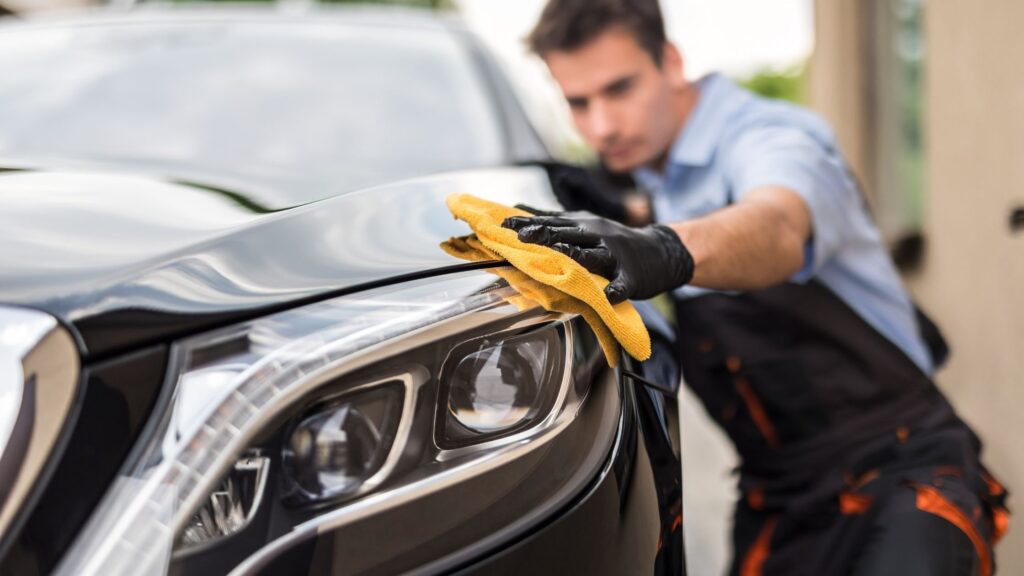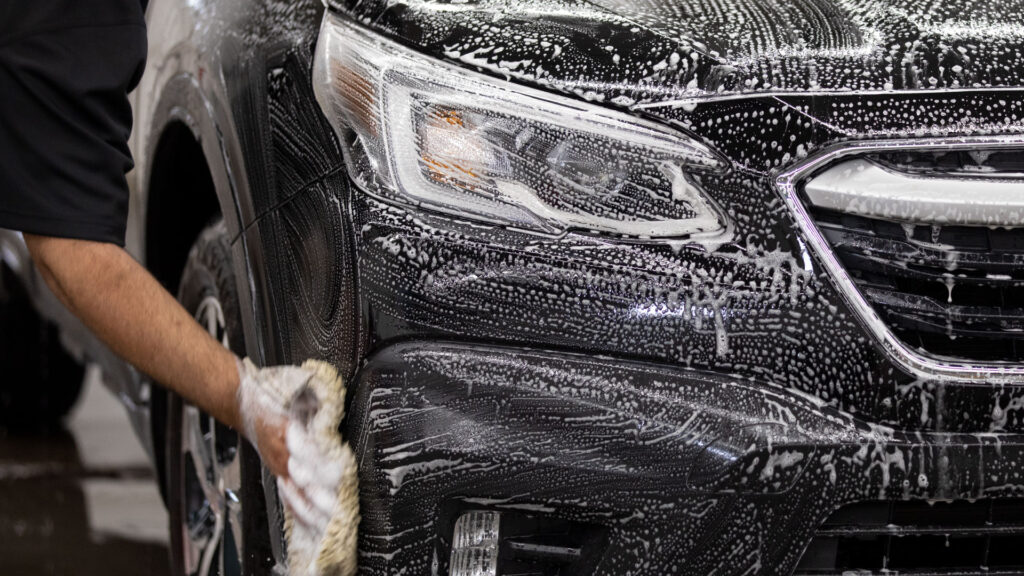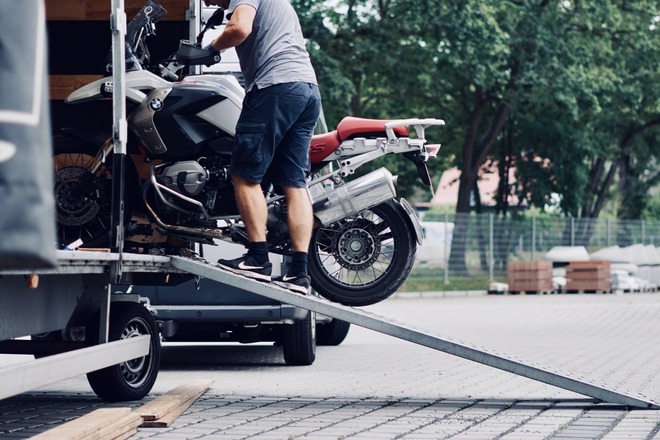Imagine, if you will, that you’re riding your dirt bike on a Sunday morning and the setting is perfect. It’s warm, but not hot. There is a light breeze. The dirt is perfect for good traction but is just damp enough to keep the dust low. You’re riding to hit the next jump, and then your chain jumps off the rear sprocket. You forgot to check your chain before getting on the track, and now you’re wondering how tight should a dirt bike chain be?
It’s time to hit the pits and tighten the drive chain back up.
How Tight Your Dirt Bike Chain Should Be
It’s easy to think of tightening your dirt bike chain like Goldie Locks trying porridge: not too tight, not too loose, but something just right.
Here’s exactly how to tighten a dirt bike chain.
If that is hard to understand, you might be more of a person that likes numbers and measurements to adjust to. Your chain should have a small amount of slack in it and be able to slightly move up and down. You can easily grab it between your fingers and lift it up and push it down. It should have some movement.
A dirt bike chain should be able to move 1.4 to 2.0 inches (35-50mm) up and down.
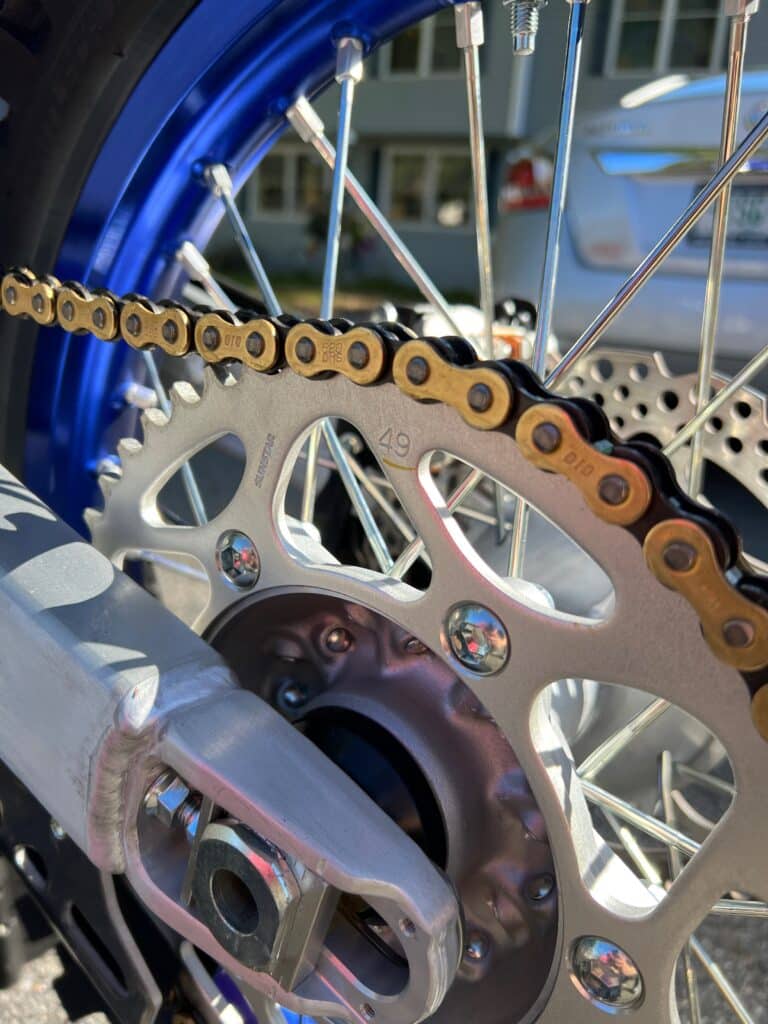
A street bike should have slightly less with 1.2 to 1.6 inches (30-40mm) of overall movement.
You should be measuring the chain movement approximately halfway between the sprocket on the transmission (near the rear of the engine) and the rear sprocket. Your owner’s manual should list what the exact chain measurement should be for your dirt bike, and also name what tool is best to use to measure the movement.
Here is the tool I personally use to measure my chain tension:
These measurements are easy to see if you have a measuring tool like a chain gauge, a tape measure, or a ruler. What if you don’t carry any of these tools in your toolbox at the track? There’s an easy way to get close enough with just your hand.
Before you leave for the track, grab a tape measure or ruler at home to measure your first three fingers on your hand (either left or right can be used). Your first three fingers (index, middle, and ring fingers) may be around 1.5 – 2.0 inches in thickness when measured together. You can use their stacked height as a basic gauge to determine if your chain is too loose or too tight.
Here is a great product to clean and lube your dirt bike chain:
How Do I Know if My Dirt Bike Chain is Too Loose?
Determining if your dirt bike chain is too loose is easy. If it comes off the rear sprocket with minimal effort, it’s definitely too loose.
The best way to understand if the adjustment is correct is to use a measuring tool like a tape measure or ruler. The next best way to measure the looseness is with your fingers. The chain should not come off the sprocket, but be tight enough to allow a slight up-and-down movement at the mid-point between the transmission and rear sprockets.
Dirt bike suspensions move up and down frequently over rough terrain and jumps, so having a drive chain that is on the high end of the measurements (a little too loose) is better than a chain that is too tight.
What Happens if Your Dirt Bike Chain is Too Loose?
If your dirt bike chain is too loose, it can actually cause a lot of problems. When the chain is too loose, it will often fall off the sprocket. Once it falls off the sprocket it can cause a lot of damage.
The loose chain, off the sprocket, can get into your wheel and spokes, or even get into and damage your engine cases.
If you’re even more unlucky, the chain falling off could cause you to crash. Depending on when it falls off, this could cause serious injury to yourself or damage to the bike.
Imagine your chain falling off right before hitting a 100ft triple in Supercross? You probably won’t ever race Supercross, but it’s a good example. For you, the chain could fall off going 50mph while trail riding or off the face of a jump at your local track.
What Happens if Your Dirt Bike Chain is Too Tight?
A dirt bike chain that is too tight doesn’t have the same immediate problem as a chain that can come off the sprockets. A chain that is too tight causes more wear on the components it contacts. There are a few signals that you can recognize with the chain being too tight: extra noise, stiff shifting, a rear wheel that locks up with suspension travel, and the clutch dragging during shifting.
- Extra noise – Your chain should have a slight noise as it engages the sprockets, but a tight chain will cause excessive noise that will increase in volume as your dirt bike speed increases.
- A drive chain that is too tight will cause your shift level to require more effort to move between gears. It can also cause the clutch to drag and not allow it to engage fully.
- Your dirt bike suspension moves up and down over rough terrain and bumps. As the suspension moves, the chain tension increases and decreases similarly. If the chain is too tight, the chain may not allow tension to increase and instead lock the rear wheel causing a skid.
Most importantly, depending on what you’re riding, a chain that is too tight can actually damage your engine/motor and transmission. Similar to how it can cause the clutch to drag, it causes the motor/engine and transmission to work harder than it otherwise would. This can, and often does, cause big problems with these components.
Of course, this is different than a gas dirt bike, but the concept is similar – my son’s Stacyc chain was unknowingly too tight and it fried the motor and speed control. It caused them to work too hard and overheat. This can happen to your larger dirt bikes, too.
If you’re tightening, or loosening, the chain on your dirt bike, you may notice that you also need new sprockets. As chains wear and you put hours on your bike, sprockets commonly need to be replaced. Learn if dirt bike sprockets are universal here.
